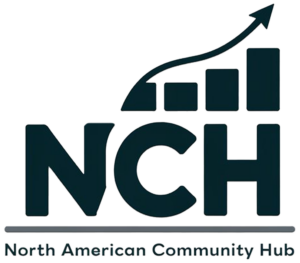Before relocating to the US for work, families must prepare in four critical areas: visa compliance, financial planning, education arrangements, and lifestyle transition support.
Without clear preparation in these domains, the move can result in delayed integration, legal complications, and significant emotional stress, especially for families with school-age children or dual-income dynamics.
Moving for work may sound like a career upgrade, but for families, it’s a high-stakes operation. You must secure the right visas, not only for the primary worker but for dependents as well, since U.S. immigration law differentiates between employment-based and dependent classifications.
You’ll need a financial buffer of at least 3 to 6 months’ worth of living expenses due to unpredictable costs like security deposits, car purchases, or medical coverage gaps. Your children’s education continuity must be safeguarded, especially if coming from a different academic system.
Public schools vary greatly by district, and private schools have application deadlines and tuition costs that may shock families coming from subsidized systems abroad.
1. Visa and Immigration Preparation for the Entire Family
| Visa Type | Who It Covers | Notes on Family Members |
| H-1B | Skilled worker | Spouse/children need H-4 visas. Spouse can’t work. |
| L-1 | Intra-company transferee | L-2 visa for spouse/children; spouse can work. |
| O-1 | Extraordinary ability | O-3 for dependents; no work authorization. |
| F-1 (student) | Student | F-2 for family; dependents cannot work or study full-time. |
The biggest mistake families make is assuming the worker’s visa alone solves immigration issues. Each family member must have a valid dependent visa, and spouses often can’t legally work unless their specific visa type allows it.
In 2024, the U.S. Citizenship and Immigration Services (USCIS) tightened oversight on H-1B dependents, requiring more documentation for H-4 visas and complicating Employment Authorization Document (EAD) approvals for spouses. Families should consult an immigration lawyer early—ideally during the job offer stage—not after paperwork is filed.
2. Financial Planning: Budget for 3–6 Months of Expenses

| Expense Category | Estimated Monthly Cost (2025, family of 4) | Notes |
| Rent (2–3 bedroom) | $2,200–$4,000 | Depends heavily on the state/city |
| Utilities & Internet | $300–$450 | May require deposits |
| Groceries | $800–$1,200 | Higher if buying ethnic/imported foods |
| Health Insurance | $1,200–$2,000 | If not covered fully by the employer |
| Transportation | $500–$900 | May include a car lease or a used vehicle |
| Childcare (if needed) | $800–$2,500 | Critical for dual-income households |
The U.S. doesn’t offer the same government-provided safety nets many other countries do, so upfront cash reserves are essential. Expect hidden costs: rental application fees, credit checks, utility setup deposits, and even mandatory renter’s insurance.
Even if your employer covers relocation fees, they often don’t cover living costs or school registration until your first paycheck, which may take 30–45 days to arrive.
3. Health Insurance and Medical Access: Mandatory from Day One
View this post on Instagram
Unlike countries with public healthcare, the U.S. health system is privatized, complex, and expensive. Families need to:
- Confirm the employer’s insurance plan start date.
- Check if dependents are included immediately.
- Secure temporary insurance for any coverage gaps.
- Understand deductibles, co-pays, and in-network vs. out-of-network rules.
| Healthcare Item | Average Cost Without Insurance |
| Pediatric visit | $150–$300 |
| Emergency room visit | $1,200+ |
| Basic prescriptions | $30–$250 per month |
| Maternity care (delivery) | $13,000–$20,000 |
Even one minor health event can cost thousands without coverage. Make health insurance a priority—do not assume coverage will “activate automatically.” For non-working spouses or students, private plans (e.g., through ACA marketplaces) may be required.
4. Education Planning: Public, Private, or International?

Schooling in the U.S. is decentralized, so the quality depends heavily on district funding and zoning laws. This creates wide disparities.
For example, schools in Palo Alto, CA, offer cutting-edge STEM programs, while some districts in rural states may lack basics like ESL support.
| School Type | Cost | Entry Requirements | Notes |
| Public (zoned) | Free | Must live in the district | Varies by ZIP code quality |
| Charter/Magnet | Free | May require lottery/waitlist | Specialized programs (STEM, arts) |
| Private | $10,000–$40,000/yr | Application, testing | Often religious/elite |
| International | $15,000–$50,000/yr | Advanced planning needed | IB curriculum, expat-friendly |
5. Housing and Legal Documents: More Than Just an Address

To rent a home in the U.S., especially in competitive markets like California, you’ll likely need to gather a variety of documents and financial proof before even applying. These include:
- A U.S. bank account
- Proof of employment or job offer
- A credit score (note: many newcomers won’t have one)
- Valid ID and visa documents
- 1–2 months’ rent as a security deposit
Beyond renting logistics, families must be prepared to present translated and authenticated legal documents—especially for school registration, healthcare, and DMV licensing. This is where using professional San Diego translation services becomes especially valuable.
Whether you’re settling in Southern California or just need a reliable team to help translate official documents like birth certificates, school transcripts, or medical records, these services ensure nothing is lost in translation at a moment when clarity matters most.
6. Mental Health and Social Integration: Don’t Overlook Emotional Prep

Relocation burnout is real. Spouses may feel isolated or lose career identity. Children may struggle with language and culture, especially if switching educational systems.
Common emotional challenges include:
- Identity loss in stay-at-home spouses
- Teen adjustment struggles
- “Trailing spouse” depression
- Cultural frustration and homesickness
What Helps
- Join expat or cultural meetup groups early (e.g., Internations, Facebook expat groups)
- Plan 1–2 short breaks post-arrival to decompress
- Keep the native language and culture alive at home, especially for children
- Involve the whole family in decision-making before the move
Final Thoughts
@ellcochlin Before moving to America, I was really scared to raise our daughter there if I’m truly honest! But it was the BEST decision we have ever made not just for us but for her❤️🇺🇸 #a#americal#livinginamericau#usac#californiae#expate#expatlifel#livingabroadm#movingb#britinamericau#ukvsusaf#fyp ♬ ALEX WARREN LEAKED – alex warren snaps
Preparing to relocate to the U.S. for work as a family is more than filling out forms or buying plane tickets. It’s a deep logistical and emotional shift that requires early preparation, legal accuracy, and a shared family plan.
Prioritize visa compliance, have a clear financial runway, ensure medical coverage from day one, and create emotional support structures. The better you prepare, the smoother your transition into American life will be. Not just for work, but for long-term family wellbeing.


